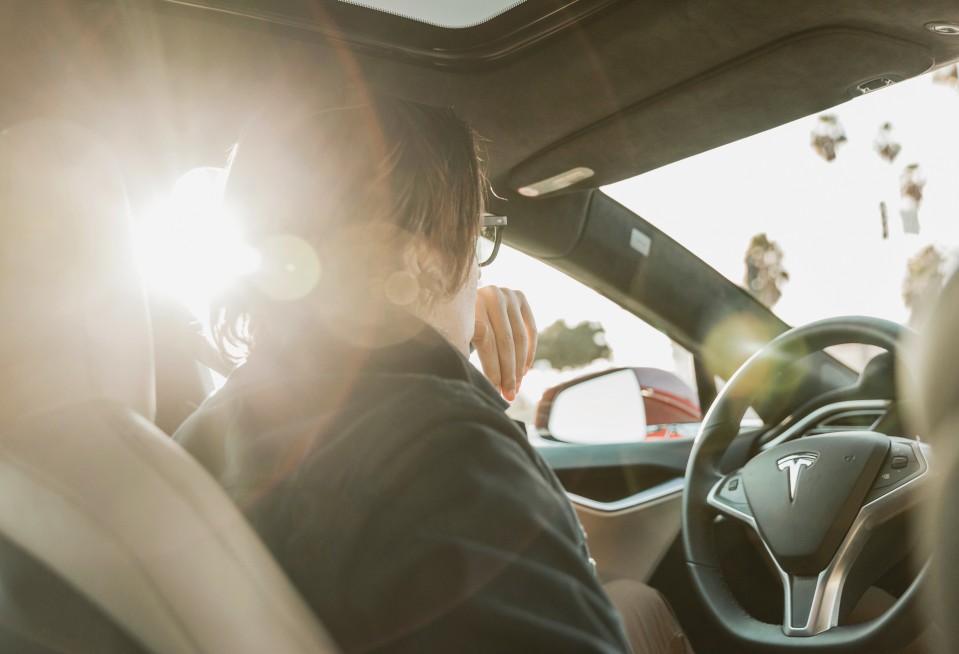

Intelligent Machines
10 Breakthrough Technologies 2016: Tesla Autopilot
The electric-vehicle maker sent its cars a software update that suddenly made autonomous driving a reality.

In October 2014, Elon Musk’s electric-car company began rolling out sedans with a dozen ultrasonic sensors discreetly placed around both bumpers and sides. For an additional $4,250, Tesla customers could purchase a “technology package” that used the sensors, as well as a camera, a front radar, and digitally controlled brakes, to help avoid collisions—essentially allowing the car to take over and stop before crashing. But mostly, the hardware sat there, waiting, waiting, and gathering reams of data. A year later, last October 14, the company sent a software update to the 60,000 sensor-laden cars it had sold in that time. The software update was officially named Tesla Version 7.0, but its nickname—Autopilot—was what stuck.
It did in fact give drivers something similar to what airline pilots employ in flight. The car could manage its speed, steer within and even change lanes, and park itself. Some of these features, like automatic parallel parking, were already on offer from other car companies (including Mercedes, BMW, and General Motors), but the self-steering was suddenly, overnight, via a software update, a giant leap toward full autonomy.
Tesla customers, delighted, posted videos of themselves on the highway, hands free, reading the paper, sipping coffee, and even, once, riding on the roof. Some of these are, it’s worth pointing out, illegal acts. Autopilot existed in a legal gray area, but it was a grand gesture toward an ever nearing future, one that will reshape not just the car and our relationship with it but the road and our entire transportation infrastructure.
Which is why I jumped at the chance to borrow a car with Autopilot for a few days and drive it—or let it drive me—around Los Angeles.
Everyone wanted to know what it felt like, the strange surrender of allowing a car to take control. The only moments that seemed like magic were when the car parked itself or changed lanes, mostly because watching a steering wheel turn all on its own was unnatural and ghostly. Other than that, I was amazed by how quickly I got used to it, how inevitable it began to feel. As a Tesla engineer told me—on condition of anonymity, because the company won’t let anyone but Musk speak publicly these days—the thing that quickly becomes strange is driving a car without Autopilot. “You’ll feel like the car is not doing its job,” he said.
The car can’t start in Autopilot; it requires a set of circumstances (good data, basically) before you can engage the setting. These include clear lane lines, a relatively constant speed, a sense of the cars around you, and a map of the area you’re traveling through—roughly in that order. L.A.’s abundant highway traffic is the ideal scenario for Autopilot, not simply because of all the data it makes available to the ultrasonic sensors—which use high-frequency sound waves to identify objects up to 16 feet away—but also because humans are awful in traffic. We are bad at estimating distances to begin with, and we are constantly trying to switch lanes when the next one looks faster, causing accidents in the process. With Autopilot, I no longer had to stare at the bumper ahead of me, and I could look around to see the variety of bad decisions drivers make, stopping and starting and stopping again. Meanwhile, my car accelerated and slowed more smoothly than it ever could have with me in charge.
With its incremental approach, Tesla stands in contrast to Google and other companies that have small test fleets gathering data in hopes of someday launching fully autonomous cars. For Tesla, its customers and their partially autonomous cars are a widely distributed test fleet. The hardware required for true autonomy is already in place, so the transition can play out in software updates. Musk has said that could be technically feasible—if not legally so—within two years.
The day after I returned the Tesla, my fiancée and I were on an L.A. freeway and saw someone, speeding, cross three lanes, cutting in front of several drivers. As the traffic stopped, the car behind us came in way too fast and crashed into our bumper, which fell right off. The future, I thought, was practically here, and it couldn’t arrive soon enough.
Advertisement